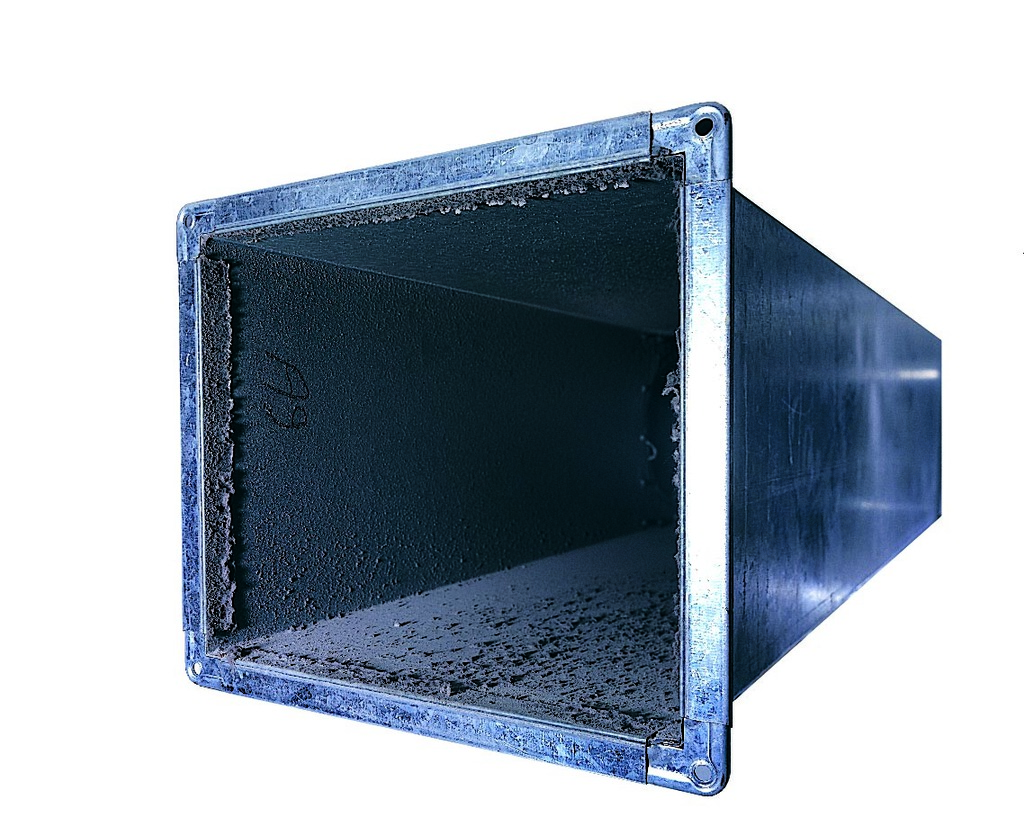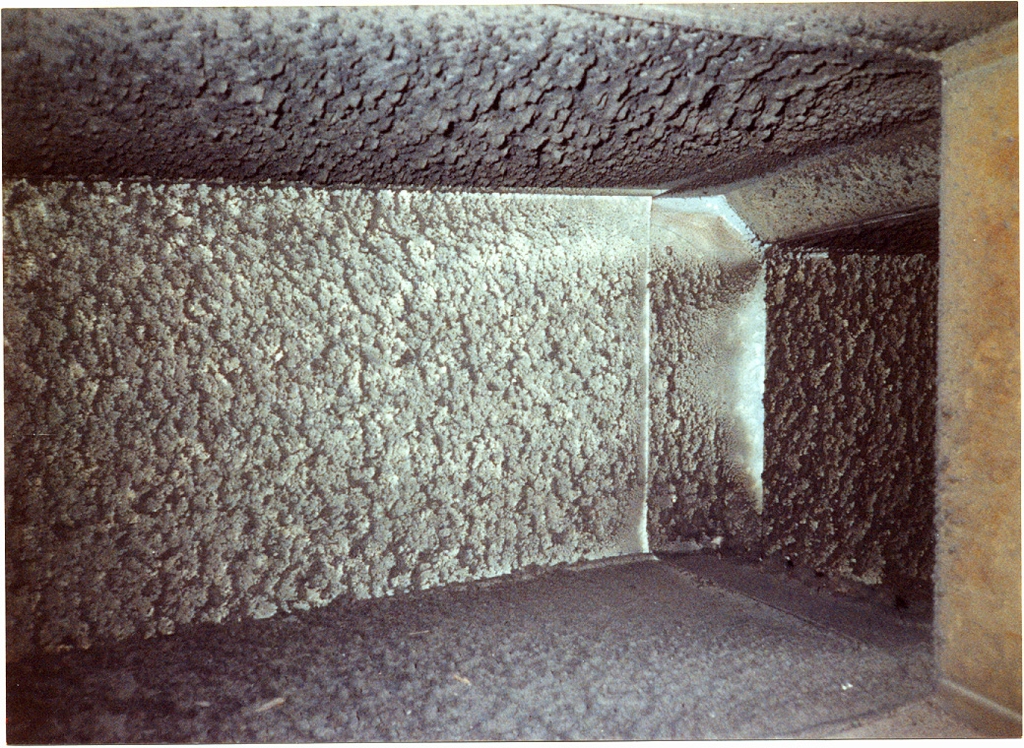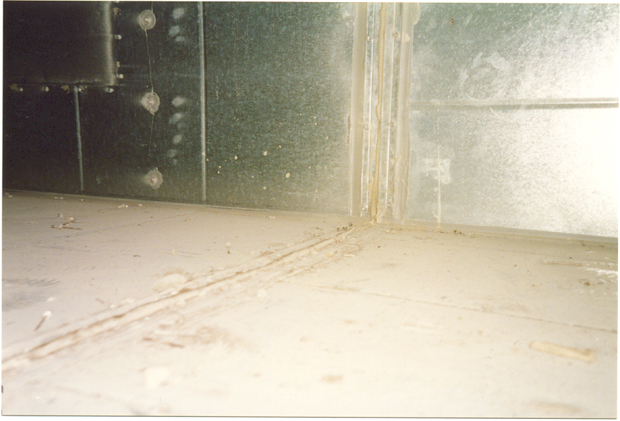Why should kitchen extract ductwork be kept clean, and why must heating,
ventilation and air conditioning (HVAC) ductwork be kept in good
condition? What other health and safety considerations surround air
conditioning and ventilation ductwork maintenance? The prime driver for
kitchen extract ductwork is fire safety, and it falls within the
Regulatory Reform Order (2005) and insurers’ requirements.
The
grease that inevitably accumulates within the duct system forms a
hidden combustion load. There are ready sources of ignition in a kitchen
and the duct system perfectly funnels oxygen. One of the big problems
is that the ductwork that connects the kitchen canopy to the fan for
discharging heat, smells and fumes to atmosphere is typically hard to
access and easy to ignore. When grease and oil is ignited, the ductwork
can spread flame and heat through the building like a fuse.
Super-heated
ductwork may ignite nearby combustible materials - hot or burning oil
can spread fire from small leaks and flame at the discharge can light up
a roof. Sometimes, the path of the fire is difficult to predict and
firefighters can lose valuable minutes tracing out the implications of
fire discovered in a building.
There are standards available, such
as the Building and Engineering Services (B&ES) Guide to Good
Practice TR19: Cleanliness of Ventilation Systems. This advocates
cleaning 'when necessary' and describes measurement techniques, such as
the wet film thickness test, to define when a system should be cleaned.
In the absence of such measurement, the advice defaults to time based
maintenance, as suggested in this Table.
Air Ductwork
For
HVAC ductwork, the prime drivers are health, comfort and wellbeing, and
this is underlined in the Workplace (Health Safety & Welfare)
Regulations, as updated in 2014. The Regulation 6 ACOP 51 states:
"Mechanical ventilation systems (including air-conditioning systems)
should be regularly and adequately cleaned. They should also be properly
tested and maintained to ensure that they are kept clean and free from
anything which may contaminate the air.”
British Standard
EN15780: Ventilation for buildings — Ductwork — Cleanliness of
ventilation systems describes the various cleanliness quality classes of
building and the appropriate frequency of inspection and cleanliness
standards to be achieved.
Table A.1 — Typical applications of cleanliness quality classes
Quality Class
Typical examples
Low
Rooms with only intermittent occupancy, e.g. storage rooms, technical rooms
Medium
Offices,
hotels, restaurants, schools, theatres, residential homes, shopping
areas, exhibition buildings, sport buildings, general areas in hospitals
and general working areas in industries
High
laboratories, treatment areas in hospitals, high quality offices
Again,
B&ES TR19 provides further detail on how to measure
cleanliness/dirtiness and suggests good practice techniques for remedial
works.
Often, the relatively complex procedures for inspection,
monitoring and measurement of cleanliness or dirtiness serve to support
common sense assessments, which are carried out by simply viewing the
duct interior. However, the measured standards are useful in cases of
uncertainty as to whether a system needs cleaning.
Increasing
interest from employers, developers and academics is focused on the
productivity gains from relatively small expenditures on improving the
working environment. The World Green Building Council’s recent report on
health, wellbeing and productivity, supported by heavyweights, such as
Jones Lang LaSalle, Skanska and Lend Lease, makes the point that there
is overwhelming evidence that demonstrates that the design and
maintenance of an office impacts the health, wellbeing and productivity
of its occupants. It goes on to describe the costs of proper maintenance
as trivial compared to staff costs.
Fire Damper Testing
Fire
damper testing is another aspect of heating, ventilation and air
conditioning maintenance that health and safety professionals need to
deal with. Fire dampers are essential life safety components that shut
in the event of fire to prevent the spread of fire from one compartment
to another via ductwork. British Standard 9999 (2008) Annex W1 mandates
regular testing of these systems to ensure that they operate properly.
This is crucial in a fire situation, and experience shows that a
significant number of dampers may fail in practice.
-ENDS-
Editor’s
note:
System Hygienics is a member of the Hotchkiss Group, which
provides specialist services in ductwork contracting, fire resistant
duct systems, ventilation products and accessories, and fire resistant
and acoustic ductwork coating.
For further information, visit HYPERLINK "http://www.systemhygienics.co.uk" www.systemhygienics.co.uk
Issued on behalf of: Issued by:
System Hygienics Limited PRG Marketing Communications
Chaucer Industrial Estate 10 Gildredge Road
Dittons Road Eastbourne
Polegate BN21 4RL
BN26 6JF
Michaela Bailey
Tel: 01323 411044
michaela@prgltd.co.uk
www.prgltd.co.uk
01323 481170onlineenquiry@systemhygienics.co.uk





